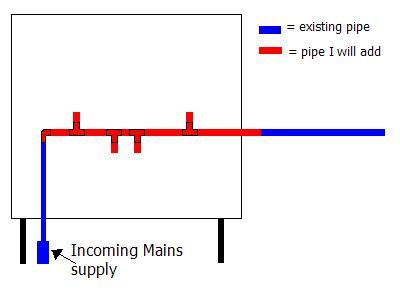- Joined
- 7 Aug 2008
- Messages
- 62
- Reaction score
- 1
- Country

Hi there,
I'm about to attempt doing some solder ring joints for the first time
I'm replacing the plumbing under my kitchen sink.
I will be having two equal tee joints (cold feeds for dishwasher and washing machine) very close to each other. As close as possible really.
I'm wondering what will happen when I solder the 2nd one on? Will the solder on the first start to melt?
What is the best way to hold the pipework in position whilst I solder joints - will the end of the pipe be too hot to hold by hand?
And also, could anyone recommend a blow torch? Is a TS7000 from Screwfix overkill for a novice DIYer? or would a TS3000 kit from BandQ be better for me?
Oh, by the way, I intend to buy a length of pipe and several joints to practice on first
Thanks for any advice!
I'm about to attempt doing some solder ring joints for the first time
I'm replacing the plumbing under my kitchen sink.
I will be having two equal tee joints (cold feeds for dishwasher and washing machine) very close to each other. As close as possible really.
I'm wondering what will happen when I solder the 2nd one on? Will the solder on the first start to melt?
What is the best way to hold the pipework in position whilst I solder joints - will the end of the pipe be too hot to hold by hand?
And also, could anyone recommend a blow torch? Is a TS7000 from Screwfix overkill for a novice DIYer? or would a TS3000 kit from BandQ be better for me?
Oh, by the way, I intend to buy a length of pipe and several joints to practice on first
Thanks for any advice!

